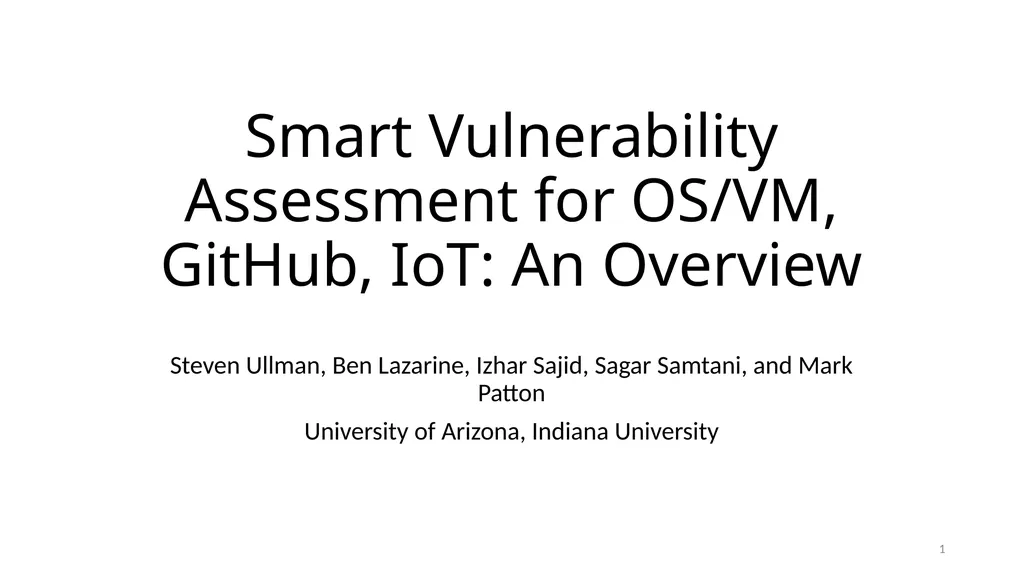
Smart Vulnerability Assessment for OS/VM, GitHub,
Author: tatiana-dople | Published: 2025-05-28
Description: Smart Vulnerability Assessment for OSVM, GitHub, IoT: An Overview Steven Ullman, Ben Lazarine, Izhar Sajid, Sagar Samtani, and Mark Patton University of Arizona, Indiana University 1 Agenda Introduction and Motivation Previous AI Lab
Download Presentation
Download the PPT/PDF: Download
Transcript:
Loading transcript…